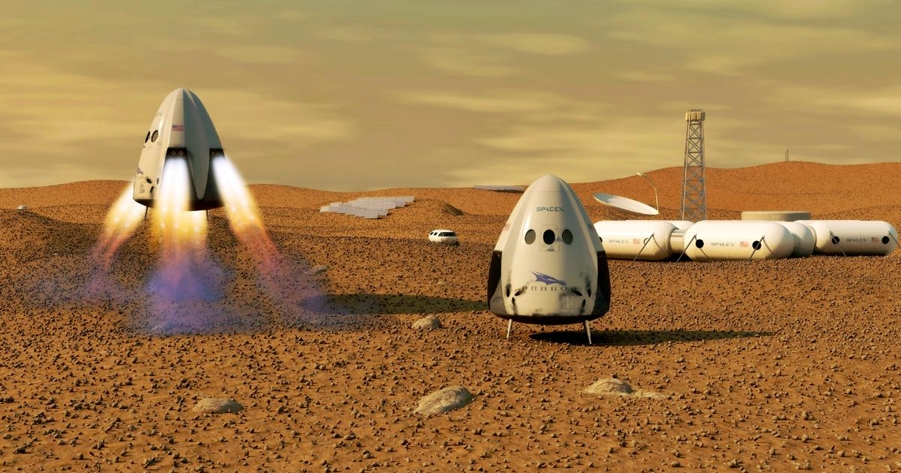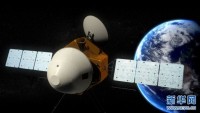China’s Plan to Land Probe on Mars in first Mars Mission Confirms Role Played by Chinese Spy that Worked for NASA
| Arthur Dominic Villasanta | | Dec 27, 2016 06:46 AM EST |
(Photo : NASA) Chinese spy Rongxing Li with a NASA Mars rover.
China has revealed ambitious space exploration plans calling for landing its Mars probe by 2020, a feat some claim would have been impossible for China's immature Mars exploration program without critical data provided by the Chinese spy, Professor Rongxing Li.
China's new space exploration plans revealed in a white paper released on Dec. 26 details its plans until 2022. It calls for landing a probe on the far side of the Moon by 2018 and the launch of China's first Mars mission -- a Mars landing mission -- by 2020.
Like Us on Facebook
China's space program is an adjunct of the People's Liberation Army (PLA), one reason why the United States has refused to cooperate with China on the International Space Station, and in other space projects.
China said it's determined to speed up the development of its space industry. China's military-managed and funded space program has made remarkable strides since 2003 when it sent its first astronaut or taikonaut, Col. Yang Liwei, into space aboard the Shenzhou 5 spacecraft.
The extremely bold goals of China's first mission to Mars will see a lander touch down on the Red Planet and return samples to Earth -- a feat no country has ever successfully achieved.
That China has the gall to attempt an almost impossible goal for its maiden Mars mission confirms the key role played by Chinese spy Rongxing Li in fast tracking China's Mars exploration program.
Li, an esteemed and world famous NASA scientist, disappeared in September 2015 taking with him invaluable NASA secrets about its Mars program.
Li, 57, returned to China and while nothing much has been heard from him since he vanished, the incredible strides taken by China's Mars program indicates his key role in this quest.
Li was praised as a genius for his work in numerous NASA projects. These included the 2003 Mars Exploration Rover mission and the 2009 lunar orbiter currently orbiting the moon. He was participating scientist on both missions.
A world renowned specialist in geospatial information, remote sensing and photogammetry, Li's work at universities in the U.S., China and Canada led to decades of critical acclaim.
In 2014, Li was named a Fellow of the American Society for Photogrammetry and Remote Sensing (ASPRS) in 2014 for his work in mapping sciences. ASPRS praised Li for his "unique leading position in planetary mapping."
Tagschina, Mars, Professor Rongxing Li, People's Liberation Army, NASA, NASA curiosity rover
©2015 Chinatopix All rights reserved. Do not reproduce without permission
EDITOR'S PICKS
-

Did the Trump administration just announce plans for a trade war with ‘hostile’ China and Russia?
-

US Senate passes Taiwan travel bill slammed by China
-

As Yan Sihong’s family grieves, here are other Chinese students who went missing abroad. Some have never been found
-

Beijing blasts Western critics who ‘smear China’ with the term sharp power
-

China Envoy Seeks to Defuse Tensions With U.S. as a Trade War Brews
-

Singapore's Deputy PM Provides Bitcoin Vote of Confidence Amid China's Blanket Bans
-

China warns investors over risks in overseas virtual currency trading
-

Chinese government most trustworthy: survey
-

Kashima Antlers On Course For Back-To-Back Titles
MOST POPULAR
LATEST NEWS
Zhou Yongkang: China's Former Security Chief Sentenced to Life in Prison

China's former Chief of the Ministry of Public Security, Zhou Yongkang, has been given a life sentence after he was found guilty of abusing his office, bribery and deliberately ... Full Article
TRENDING STORY

China Pork Prices Expected to Stabilize As The Supplies Recover

Elephone P9000 Smartphone is now on Sale on Amazon India

There's a Big Chance Cliffhangers Won't Still Be Resolved When Grey's Anatomy Season 13 Returns

Supreme Court Ruled on Samsung vs Apple Dispute for Patent Infringement

Microsoft Surface Pro 5 Rumors and Release Date: What is the Latest?












